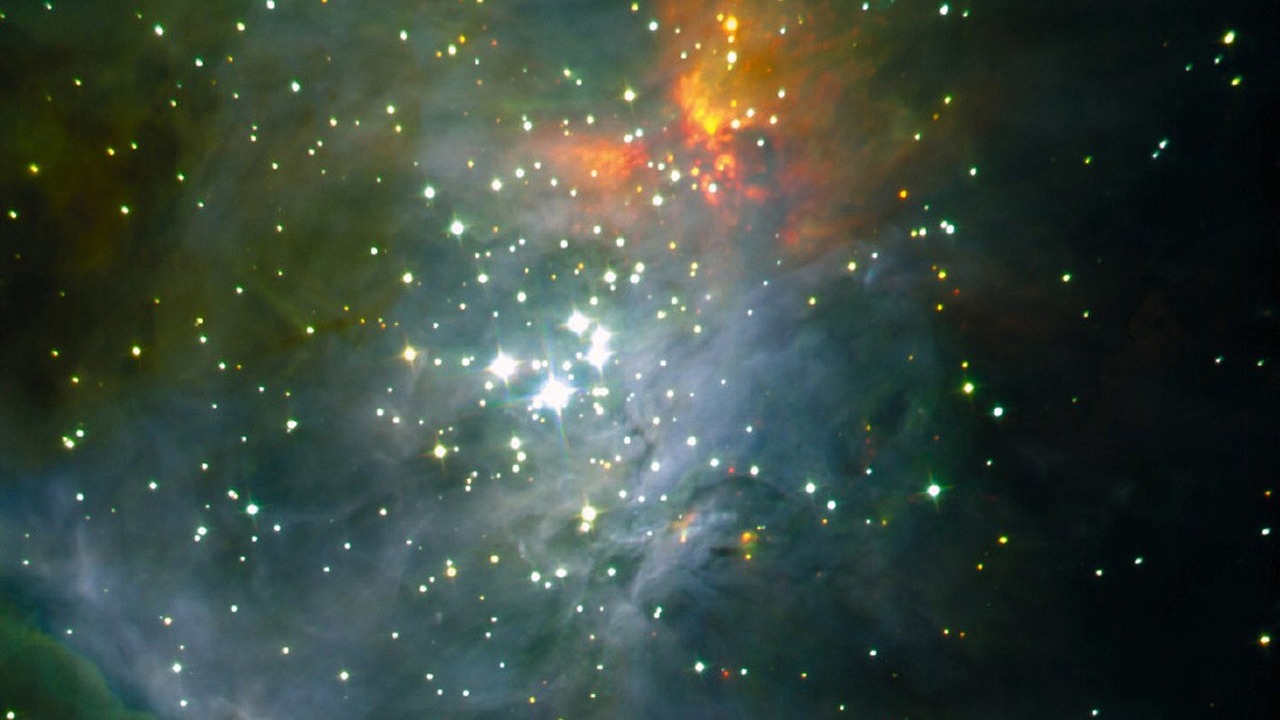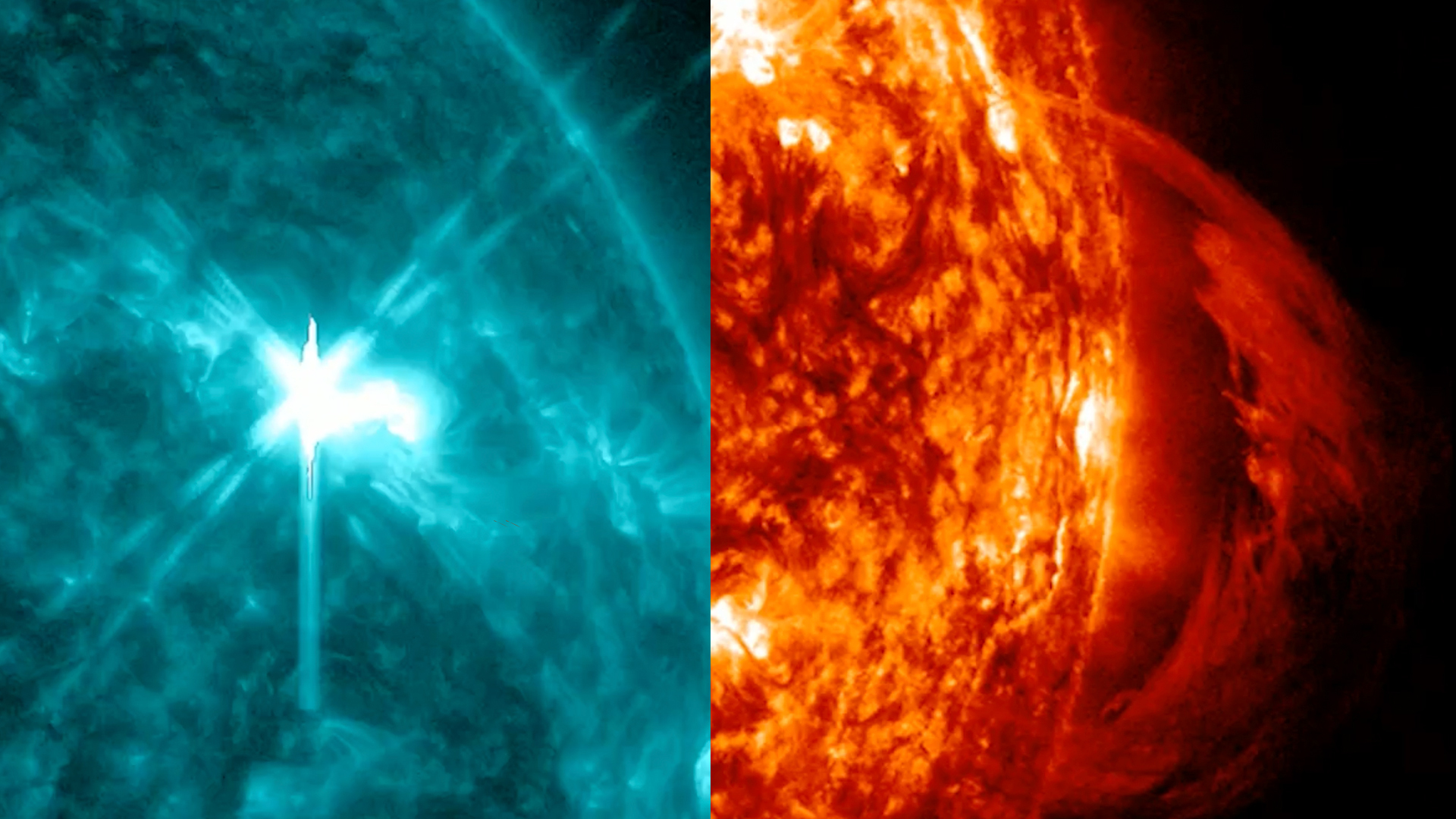James Webb Space Telescope preparing to see starbirth in high definition
A stellar nursey in the Orion Nebula promises to reveal early-stage star formation.

NASA's newest deep space observatory will soon turn its eyes to a relatively nearby region bursting with young stars.
The James Webb Space Telescope has almost completed commissioning and will release its first operational images July 12. Next comes a program of early science, including an investigation of the Trapezium Cluster, a stellar nursery in the Orion Nebula some 1,350 light-years from Earth.
The cluster is packed with gas and dust and includes about 1,000 young stars jam-packed into an area just four light-years across, officials with the Webb consortium said in a statement.
The stars are also quite young (around a million years old) compared with the 4.5-billion-year-old sun. While the star at the center of our solar system is in its midlife, Trapezium's stars are still toddlers, only about three or four days old.
"Astronomers using the Webb telescope will study this cluster to understand stars and their planetary systems in the very earliest stages [of their evolution]," officials wrote in a 2020 statement about the Trapezium study.
Live updates: NASA's James Webb Space Telescope mission
Related: How the James Webb Space Telescope works in pictures
A team led by Mark McCaughrean, the Webb interdisciplinary scientist for star formation and senior advisor at the European Space Agency, plans to focus on three phenomena present in Trapezium.
Breaking space news, the latest updates on rocket launches, skywatching events and more!
The first will be observing young objects, including brown dwarfs (bodies that were too small to ignite nuclear fusion in their cores but too large to be classified as planets) and free-floating planets not in orbit around a star. These types of enigmatic objects could reveal more clues as to how planets form, whether as a part of star formation or by themselves, the consortium officials said in the statement.
The second investigation will study planet formation in early phases, which will use Webb's infrared detectors to measure exoplanets potentially forming in young stellar discs.
"By comparing [Webb images] with images in the visible light made with the Hubble Space Telescope, the team will learn about the dust's composition, which will help them understand the very earliest phases of planet formation," the consortium stated.
The last of the trio of studies concerns jet and outflows from young stars, which the consortium officials said is integral to star formation.
"Because the Orion Nebula is home to many, many young stars, there are many jets and outflows in the region, both large and small," the statement added. "The team will use Webb to measure the fine structures in these outflows and determine their speeds, as well as assess their cumulative feedback on the surrounding star-forming clouds."
Webb is perfectly optimized for such studies as it detects infrared light, essentially heat emitted by the observed objects, which enables the telescope to peer through dust and even detect bodies that are not particularly hot. Moreover, the telescope's position in deep space keeps it away from Earth's atmosphere, which interferes with infrared observations, the consortium said.
McCaughrean added he is intrigued about the dynamics of Trapezium and about stellar nurseries more generally, and looks forward to Webb's assistance in providing new views of these areas of starbirth.
"We're very interested in understanding how stars and their planetary systems develop in the very earliest stages," he said.
Follow Elizabeth Howell on Twitter @howellspace. Follow us on Twitter @Spacedotcom and on Facebook.
Join our Space Forums to keep talking space on the latest missions, night sky and more! And if you have a news tip, correction or comment, let us know at: community@space.com.

Elizabeth Howell (she/her), Ph.D., was a staff writer in the spaceflight channel between 2022 and 2024 specializing in Canadian space news. She was contributing writer for Space.com for 10 years from 2012 to 2024. Elizabeth's reporting includes multiple exclusives with the White House, leading world coverage about a lost-and-found space tomato on the International Space Station, witnessing five human spaceflight launches on two continents, flying parabolic, working inside a spacesuit, and participating in a simulated Mars mission. Her latest book, "Why Am I Taller?" (ECW Press, 2022) is co-written with astronaut Dave Williams.
